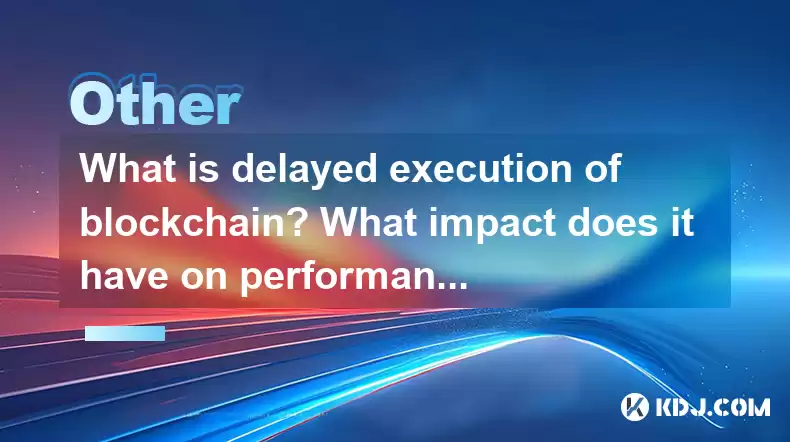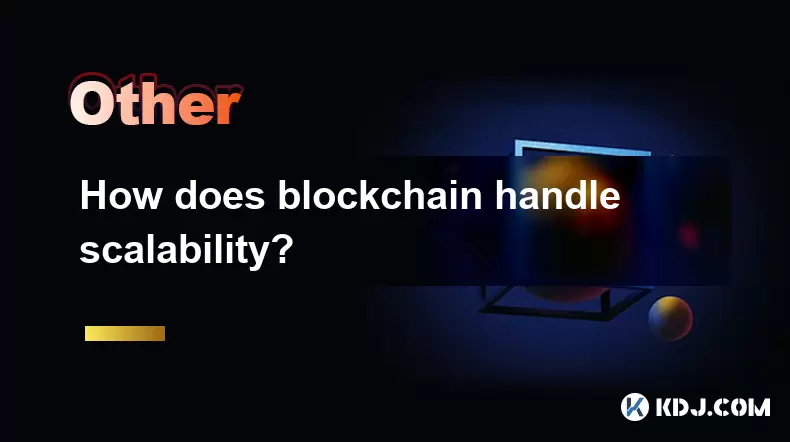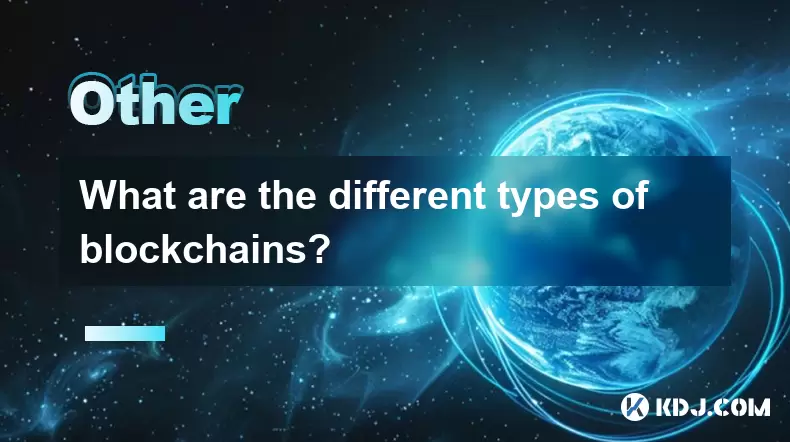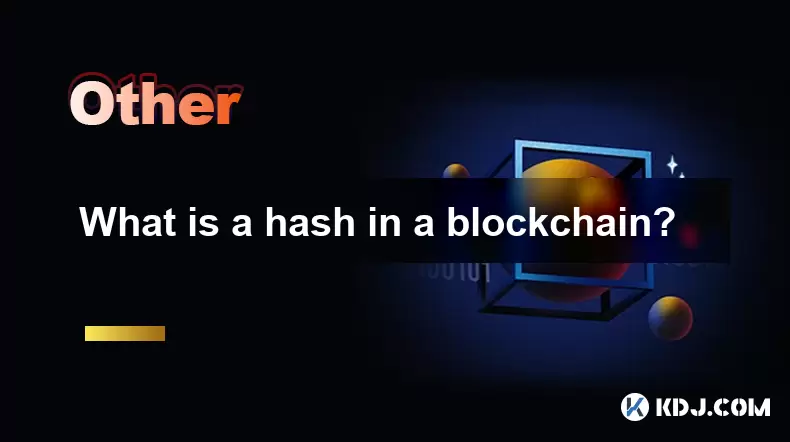-
 Bitcoin
Bitcoin $112400
-1.07% -
 Ethereum
Ethereum $3409
-3.27% -
 XRP
XRP $2.784
-6.60% -
 Tether USDt
Tether USDt $0.9997
-0.03% -
 BNB
BNB $739.3
-2.09% -
 Solana
Solana $158.0
-2.90% -
 USDC
USDC $0.9998
-0.02% -
 TRON
TRON $0.3213
-0.94% -
 Dogecoin
Dogecoin $0.1929
-5.01% -
 Cardano
Cardano $0.6974
-2.82% -
 Hyperliquid
Hyperliquid $36.69
-2.31% -
 Sui
Sui $3.327
-4.80% -
 Stellar
Stellar $0.3672
-5.18% -
 Chainlink
Chainlink $15.65
-3.07% -
 Bitcoin Cash
Bitcoin Cash $525.0
-1.68% -
 Hedera
Hedera $0.2291
-6.00% -
 Avalanche
Avalanche $20.91
-2.96% -
 Ethena USDe
Ethena USDe $1.000
0.00% -
 Toncoin
Toncoin $3.520
-1.12% -
 UNUS SED LEO
UNUS SED LEO $8.968
0.14% -
 Litecoin
Litecoin $105.7
0.26% -
 Shiba Inu
Shiba Inu $0.00001181
-1.79% -
 Polkadot
Polkadot $3.492
-2.08% -
 Uniswap
Uniswap $8.800
-3.10% -
 Dai
Dai $0.9999
-0.01% -
 Monero
Monero $289.9
-3.17% -
 Bitget Token
Bitget Token $4.243
-1.27% -
 Pepe
Pepe $0.00001006
-3.67% -
 Cronos
Cronos $0.1248
-5.68% -
 Aave
Aave $249.7
-2.50%
What is delayed execution of blockchain? What impact does it have on performance?
Delayed execution in blockchain postpones transactions until specific conditions are met, enhancing efficiency, scalability, and security across platforms like Ethereum and Polkadot.
Apr 28, 2025 at 10:29 am

The concept of delayed execution in blockchain technology refers to the practice of postponing the execution of certain transactions or smart contract operations until specific conditions are met. This mechanism is often employed to enhance the efficiency, scalability, and security of blockchain networks. In this article, we will delve into the intricacies of delayed execution, explore its implementation across various blockchain platforms, and analyze its impact on performance.
Understanding Delayed Execution in Blockchain
Delayed execution is a strategic approach used in blockchain systems to manage the timing of transaction processing. Instead of executing transactions immediately upon their inclusion in a block, delayed execution allows for the deferral of these operations until a later time. This can be triggered by various factors, such as the passage of time, the occurrence of specific events, or the fulfillment of predefined conditions within the smart contract logic.
The primary purpose of delayed execution is to optimize the performance of blockchain networks. By spreading out the computational load over time, it helps in reducing the immediate resource demands on the network, thereby improving overall efficiency and scalability. Additionally, delayed execution can enhance security by allowing for more thorough validation and verification processes before the final execution of transactions.
Implementation of Delayed Execution
Different blockchain platforms implement delayed execution in various ways, each tailored to the specific needs and architecture of the network. Let's explore some notable examples:
Ethereum: In Ethereum, delayed execution can be achieved through the use of smart contracts. Developers can write contracts that include conditional logic to delay the execution of certain functions. For instance, a contract might require a specific time to elapse or a particular event to occur before a transaction is processed.
Polkadot: Polkadot's architecture allows for the implementation of delayed execution through its parachain model. Parachains can be designed to handle transactions in a deferred manner, allowing for more flexible and efficient processing of operations across the network.
Hyperledger Fabric: This enterprise-grade blockchain platform supports delayed execution through its endorsement and validation policies. Transactions can be configured to be executed only after they have been endorsed by a certain number of peers, thereby introducing a delay in the process.
Impact of Delayed Execution on Performance
The implementation of delayed execution in blockchain systems can have significant effects on performance. Let's examine these impacts in detail:
Scalability: By spreading out the execution of transactions over time, delayed execution can significantly enhance the scalability of a blockchain network. This is particularly beneficial in high-throughput environments where the immediate processing of all transactions could lead to network congestion and performance bottlenecks.
Resource Management: Delayed execution allows for better management of computational resources. By deferring the processing of certain transactions, the network can allocate resources more efficiently, reducing the likelihood of resource exhaustion and improving overall system stability.
Security: The delayed execution of transactions can enhance the security of a blockchain network. By allowing for more time to validate and verify transactions, the network can implement more robust security checks, reducing the risk of fraudulent or malicious activities.
User Experience: From a user perspective, delayed execution can lead to a more predictable and stable experience. Users may experience fewer delays and failures in transaction processing, as the network can handle the load more effectively over time.
Case Studies of Delayed Execution in Action
To illustrate the practical application of delayed execution, let's look at a few case studies:
Decentralized Finance (DeFi) Platforms: In DeFi platforms, delayed execution is often used to manage complex financial transactions. For example, a lending protocol might delay the execution of a loan repayment until a specific date, allowing for better management of liquidity and risk.
Supply Chain Management: In blockchain-based supply chain solutions, delayed execution can be used to manage the timing of goods delivery and payment settlements. This ensures that all parties involved in the supply chain can coordinate their actions more effectively, leading to improved efficiency and trust.
Gaming and NFTs: In the gaming industry, delayed execution can be used to manage the distribution of non-fungible tokens (NFTs). For instance, a game might delay the minting of an NFT until a player achieves a certain milestone, enhancing the gaming experience and ensuring fair distribution of rewards.
Technical Considerations for Implementing Delayed Execution
Implementing delayed execution in a blockchain system requires careful consideration of several technical aspects. Here are some key considerations:
Smart Contract Design: The design of smart contracts is crucial for effective delayed execution. Developers must ensure that the contract logic includes clear conditions for delaying and triggering the execution of transactions.
Network Consensus: The consensus mechanism of the blockchain network must support delayed execution. This may involve modifications to the existing consensus protocol to accommodate the deferred processing of transactions.
Data Management: Efficient data management is essential for delayed execution. The blockchain must be able to store and retrieve transaction data effectively, ensuring that delayed transactions can be executed accurately when the conditions are met.
Performance Monitoring: Continuous monitoring of network performance is necessary to ensure that delayed execution is achieving its intended benefits. This includes tracking metrics such as transaction throughput, latency, and resource utilization.
Challenges and Limitations of Delayed Execution
While delayed execution offers numerous benefits, it also comes with its own set of challenges and limitations:
Complexity: Implementing delayed execution can add complexity to the blockchain system. Developers must carefully design and test the logic for delaying and triggering transactions, ensuring that it works seamlessly within the network.
User Expectations: Users may have different expectations regarding the timing of transaction execution. Delayed execution can lead to confusion or dissatisfaction if users are not adequately informed about the potential delays.
Security Risks: While delayed execution can enhance security in some ways, it can also introduce new risks. For example, if the conditions for triggering delayed transactions are not properly secured, malicious actors might exploit these vulnerabilities.
Interoperability: Ensuring interoperability between different blockchain platforms that implement delayed execution can be challenging. Standardization of protocols and practices is necessary to facilitate seamless interaction between networks.
Frequently Asked Questions
Q: Can delayed execution be used in all types of blockchain networks?
A: While delayed execution can be implemented in various blockchain networks, its effectiveness depends on the specific architecture and consensus mechanism of the network. Networks with more flexible smart contract capabilities, such as Ethereum, are better suited for implementing delayed execution compared to those with more rigid structures.
Q: How does delayed execution affect the finality of transactions?
A: Delayed execution can impact the finality of transactions by introducing a period of uncertainty before the transaction is fully processed. However, once the conditions for execution are met, the transaction achieves finality in the same way as immediate transactions, ensuring the integrity of the blockchain ledger.
Q: Are there any regulatory implications of using delayed execution in blockchain?
A: The use of delayed execution in blockchain can have regulatory implications, particularly in industries such as finance and healthcare. Regulators may require transparency and accountability in the timing of transaction execution, necessitating clear documentation and reporting of delayed transactions.
Q: How can developers ensure the security of delayed transactions?
A: Developers can enhance the security of delayed transactions by implementing robust validation and verification processes, using secure smart contract design practices, and regularly auditing the blockchain system for potential vulnerabilities. Additionally, clear communication with users about the timing and conditions of delayed transactions can help mitigate security risks.
Disclaimer:info@kdj.com
The information provided is not trading advice. kdj.com does not assume any responsibility for any investments made based on the information provided in this article. Cryptocurrencies are highly volatile and it is highly recommended that you invest with caution after thorough research!
If you believe that the content used on this website infringes your copyright, please contact us immediately (info@kdj.com) and we will delete it promptly.
- Ruvi AI: The Millionaire Maker with a Price Spike on the Horizon?
- 2025-08-03 02:50:12
- DOGE, Utility Coins, and Smart Money: A New Era for Crypto Investing?
- 2025-08-03 02:50:12
- Punisher Coin: Is This Meme Coin the Crypto Investment with 100x ROI Potential?
- 2025-08-03 03:30:12
- Ruvi AI, XRP, and CoinMarketCap: Decoding the Crypto Buzz
- 2025-08-03 03:30:12
- Solana, WeWake, and Presales: What's Hot in the Crypto Space?
- 2025-08-03 03:35:25
- MoonBull, LOFI Pepe: Navigating the Meme Coin Mania and the Best Crypto Whitelist
- 2025-08-03 04:10:12
Related knowledge

What is the difference between on-chain and off-chain transactions?
Aug 02,2025 at 04:22pm
Understanding On-Chain TransactionsOn-chain transactions refer to digital asset transfers that are recorded directly on a blockchain ledger. These tra...

What is the double-spending problem and how does blockchain prevent it?
Aug 02,2025 at 01:07pm
Understanding the Double-Spending ProblemThe double-spending problem is a fundamental challenge in digital currency systems where the same digital tok...

What is the difference between a blockchain and a database?
Aug 01,2025 at 09:36pm
Understanding the Core Structure of a BlockchainA blockchain is a decentralized digital ledger that records data in a series of immutable blocks linke...

How does blockchain handle scalability?
Aug 02,2025 at 02:58pm
Understanding Blockchain Scalability ChallengesBlockchain scalability refers to a network's ability to handle an increasing volume of transactions wit...

What are the different types of blockchains?
Aug 03,2025 at 03:01am
Public Blockchains: Open and Decentralized NetworksPublic blockchains are the most widely recognized type of blockchain, characterized by their open a...

What is a hash in a blockchain?
Aug 02,2025 at 05:28am
Understanding the Concept of Hash in BlockchainA hash in the context of blockchain technology refers to a unique digital fingerprint generated by a cr...

What is the difference between on-chain and off-chain transactions?
Aug 02,2025 at 04:22pm
Understanding On-Chain TransactionsOn-chain transactions refer to digital asset transfers that are recorded directly on a blockchain ledger. These tra...

What is the double-spending problem and how does blockchain prevent it?
Aug 02,2025 at 01:07pm
Understanding the Double-Spending ProblemThe double-spending problem is a fundamental challenge in digital currency systems where the same digital tok...

What is the difference between a blockchain and a database?
Aug 01,2025 at 09:36pm
Understanding the Core Structure of a BlockchainA blockchain is a decentralized digital ledger that records data in a series of immutable blocks linke...

How does blockchain handle scalability?
Aug 02,2025 at 02:58pm
Understanding Blockchain Scalability ChallengesBlockchain scalability refers to a network's ability to handle an increasing volume of transactions wit...

What are the different types of blockchains?
Aug 03,2025 at 03:01am
Public Blockchains: Open and Decentralized NetworksPublic blockchains are the most widely recognized type of blockchain, characterized by their open a...

What is a hash in a blockchain?
Aug 02,2025 at 05:28am
Understanding the Concept of Hash in BlockchainA hash in the context of blockchain technology refers to a unique digital fingerprint generated by a cr...
See all articles

























































































